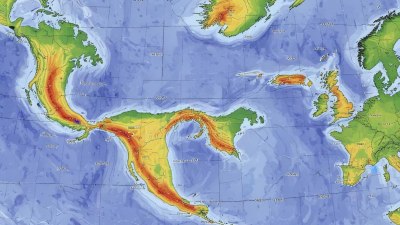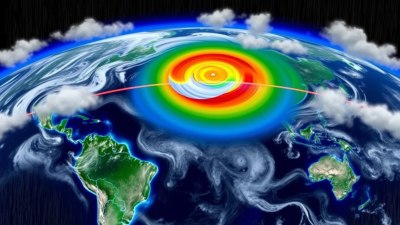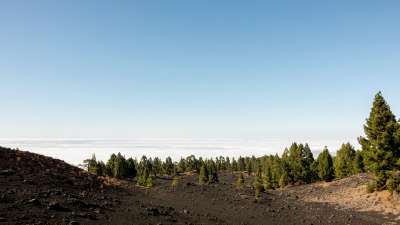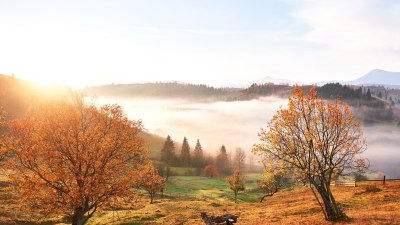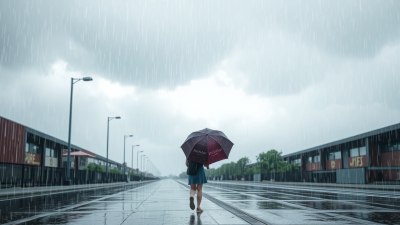Why Does Fog Make Everything Look Creepy
The science and psychology behind why misty landscapes feel unsettling

Image by anastasiialang1 on Freepik
There’s something about fog that instantly changes the mood of a place. A quiet street, a peaceful forest, or an ordinary field—when covered in mist—suddenly feels unsettling, eerie, even haunted. But why does fog have this effect on us? It turns out, the reason fog is creepy isn’t just in our heads—it’s deeply connected to science, psychology, and pop culture.
Fog Obscures What We Expect to See
The human brain loves clarity and predictability. We rely on sight to navigate the world, and when that sight is partially blocked, our brains fill in the gaps. This uncertainty triggers a sense of unease because:
- We can’t see potential dangers: Fog limits visibility, making it impossible to tell what’s ahead.
- Shapes become distorted: A tree or a streetlight in the mist might look like a shadowy figure.
- Our depth perception is thrown off: Without clear reference points, objects seem to appear out of nowhere.
In short, fog messes with our ability to trust our surroundings, making us feel like something unknown could be lurking just beyond our vision.
It Triggers Our Fear of the Unknown
Psychologists have long studied the human fear of the unknown. Fog creates an environment where:
- We feel isolated: Thick mist makes it hard to see far, creating a sense of being cut off from the world.
- We expect surprises: The brain anticipates sudden appearances—whether it’s a person, an animal, or something scarier.
- We associate it with danger: Evolutionarily, humans are wired to be wary of conditions where threats could be hidden.
Horror Movies Have Taught Us That Fog = Fear
Decades of horror films and ghost stories have conditioned us to associate fog with fear. Think of classic horror scenes:
- Graveyards covered in mist: Because what’s spookier than a foggy cemetery?
- A lone figure emerging from the fog: The classic horror movie trope.
- Silent towns shrouded in mist: Fog turns familiar places into eerie, abandoned landscapes (see: Silent Hill).
Because we’ve seen fog used in terrifying moments, our brains now automatically link mist with unease, even in real life.
Fog Warps Sound, Making Everything Feel Off
It’s not just what we see—fog also changes the way we hear the world around us. The thick air can:
- Muffle sounds: Making everything feel unnaturally quiet.
- Echo unpredictably: Sounds seem closer or farther away than they actually are.
- Distort voices and noises: A distant conversation or footsteps can take on a ghostly quality.
This alteration of sound adds to the unsettling effect, making foggy environments feel almost supernatural.
Our Survival Instincts Make Us Extra Cautious
Back in prehistoric times, early humans relied on sight and sound to detect predators. A foggy landscape would have been a serious survival threat because:
- Predators could hide easily.
- Visibility made hunting and foraging difficult.
- It was harder to navigate safely.
Even though most of us don’t have to worry about being hunted anymore, our instincts still react to fog as if danger is nearby.
Fog Transforms Familiar Places Into Something Unrecognizable
Ever walked down a street you know well, only to feel uneasy when it’s foggy? That’s because mist changes the landscape:
- Buildings, trees, and cars fade into the background.
- Shadows and outlines take on strange shapes.
- The distance between objects seems distorted.
Seeing a familiar place suddenly look unfamiliar tricks our brains into thinking something isn’t right, triggering discomfort.
Fog Will Always Be Mysterious and Unsettling
There’s a reason fog plays such a big role in horror stories, eerie photography, and unsettling moments—it removes clarity, distorts reality, and taps into our deep-rooted fears of the unknown. So next time you find yourself in a thick fog, feeling a little creeped out for no logical reason, remember: your brain is just doing what it’s designed to do—keeping you on high alert for whatever might be lurking in the mist.
